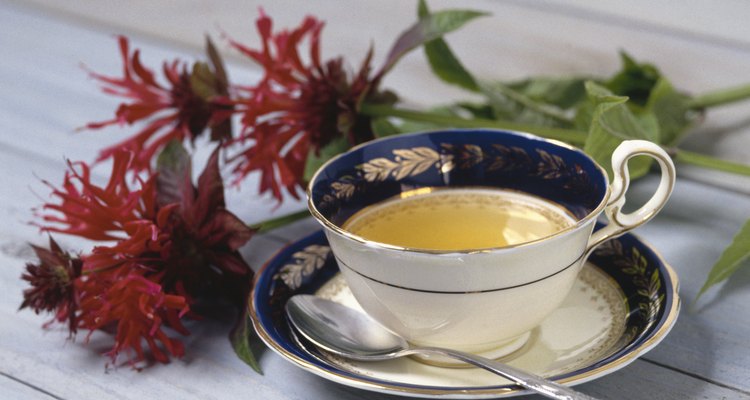
Hemera Technologies/Photos.com/Getty Images
Tea ceremonies are steeped in a set of ancient customs, particularly in the Chinese, Korean and Japanese cultures. Traditionally, ceremonies center around rituals of specific gestures, etiquette and formal dress in the preparation and serving of the tea. Modern-day ceremonies are still commonly performed, even though they may not follow rituals as strictly. Guests should dress appropriately to show respect for the tradition of the ceremony.
Type of Ceremony
Determine what kind of cultural tea ceremony you plan to attend, as each differs in its rules for proper attire. Japanese tea ceremonies, the most formal of the three East Asian cultures, strongly encourage the wearing of a kimono. Korean tea ceremonies may require traditional dress, tops or pants. Some Chinese tea ceremonies are performed right after a wedding, where guests observe the newlyweds presenting tea to elder relatives, as a sign of appreciation. More relaxed tea ceremonies may simply require subdued Western clothing. When in doubt, ask the host of the ceremony about the dress code.
Formal Kimono
Unless the host says otherwise, wear a formal kimono to Japanese tea ceremonies, because many of the movements during the ceremony are designed specifically with the kimono in mind. For instance, the rituals for straightening your kimono, moving your sleeves out of the way, or tucking silk cloths and fans into the breast of a kimono all follow a prescribed routine. During cooler seasons, guests don lined kimonos; during the warmer months, they wear unlined kimonos. Men typically wear kimonos without patterns in subdued colors, while women wear brighter kimono styles, according to the season.
Remove Your Shoes
Take off your shoes and sandals when walking on a traditional Japanese tatami, or floor mat. Unwashed feet or dirty socks are considered taboo, so wash your feet and wear clean socks to the tea ceremony. Men and women also have the option of wearing traditional white tabi, or Japanese-style socks. The tatami mat is expected to be as clean as the utensils used during the ceremony.
Formal Western Clothing
Formal Western clothing is also accepted as a substitute for a kimono or other traditional outfits. Wear understated colors and conservative shapes, such as a suit and tie, or a long, modest skirt. Avoid wearing jewelry, perfume and loud colors or patterns, which can distract others from properly observing the ceremonial customs. Wearing subdued outfits will help you focus instead on savoring the tea and practice the art of meditation, one of the principles revered in tea ceremonies.
Related Articles

What Can You Wear for a Hindu ...

How to Dress for a Bris Ceremony

Proper Attire for Afternoon Tea

What Is the Traditional Dress Color for ...
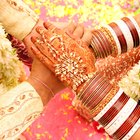
What Do Guests Wear to an Indian ...

Semiformal Clothing Etiquette

Traditional Chilean Wedding Attire
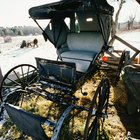
What Do the English Wear to an Amish ...

The Proper Attire for a Girl's First ...
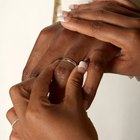
Traditional African Wedding Attire
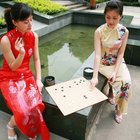
What Do Chinese Women Wear?

What Do Boys Wear for First Communion?

Proper Mother-Of-The-Bride Apparel for ...

Jewish Funeral Etiquette for Gentiles

Clothing Etiquette for a Courthouse ...

What Is an African Kufi Hat?

Coptic Orthodox Dress Etiquette
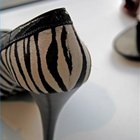
How to Clean Fabric Dress Shoes

How to Wear a Prayer Shawl

List of Themes for a Church Tea in May
References
Writer Bio
Dominique Fong has served as a community reporter for "The Oregonian," a daily newspaper based in Portland, Ore., and contributed to "Angeleno Magazine" and the "Los Angeles Business Journal." Fong holds bachelor's degrees in print journalism and political science.
Photo Credits
Hemera Technologies/Photos.com/Getty Images